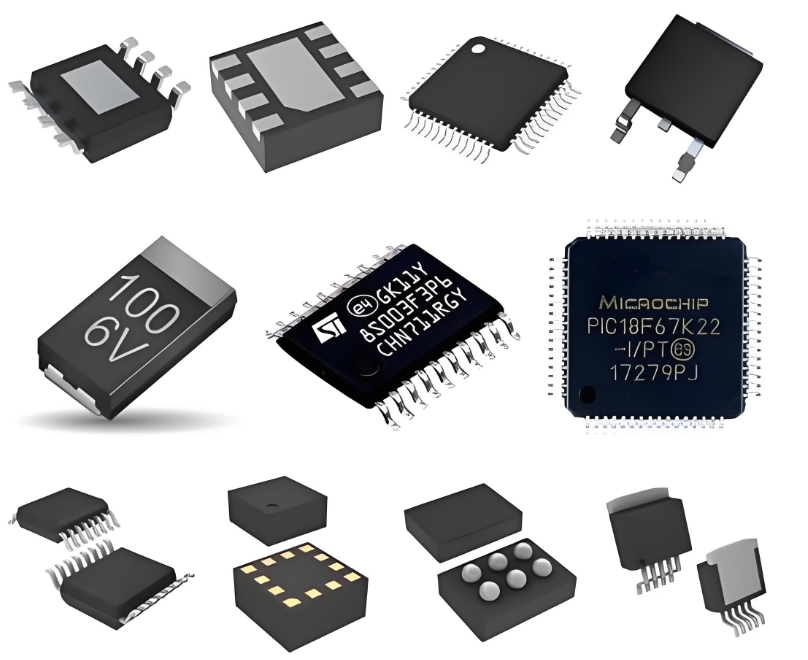**AD5207BRU50: A Comprehensive Technical Overview of the Dual 256-Position Digital Potentiometer**
The **AD5207BRU50** from Analog Devices represents a significant advancement in digital potentiometer technology, offering a compact and highly integrated solution for precision analog signal conditioning and adjustment. As a **dual-channel, 256-position digitally controlled variable resistor**, this device is engineered to replace traditional mechanical potentiometers in a wide array of applications, providing enhanced reliability, programmability, and space savings.
**Core Architecture and Functionality**
At its heart, the AD5207BRU50 consists of two independent, fixed-resistance strings composed of 255 equal-value internal resistors. A wiper, whose position is controlled via a serial peripheral interface (SPI), connects to a point along this string, effectively creating a variable resistor between three terminals: Terminal A (Ax), Terminal W (Wiper, Wx), and Terminal B (Bx). The **50 kΩ end-to-end resistance** (as denoted by the '50' in the part number) remains constant, while the ratio of resistance between the wiper and each terminal is digitally adjustable.
The device operates from a single **2.7 V to 5.5 V supply**, making it compatible with both 3.3 V and 5 V logic systems. This wide operating voltage range ensures flexibility in various design environments. Communication is handled through a simple 3-wire SPI-compatible serial interface, allowing a microcontroller to set the wiper position for each channel with an 8-bit data word (28 = 256 positions). The **non-volatile memory (NVM)** is a critical feature; it allows the device to save the current wiper position at power-down and automatically restore it upon the next power-up, ensuring consistent performance without requiring re-initialization from the host controller.
**Key Performance Characteristics**
Several technical specifications make the AD5207BRU50 stand out:
* **Resolution:** **256 positions** per channel provide a fine step size of approximately 196Ω (50 kΩ/255) for precise adjustments.
* **Interface:** The robust SPI interface supports clock rates up to 10 MHz, enabling rapid updates and communication.
* **Temperature Range:** It is specified for the industrial temperature range (**-40°C to +85°C**), guaranteeing stable operation in harsh environments.
* **Package:** The device is offered in a small **24-lead TSSOP package**, which is crucial for space-constrained PCB designs.
**Primary Applications**
The versatility of the AD5207BRU50 makes it suitable for numerous applications, including:

* **Programmable Voltage Regulation:** Setting reference voltages and bias points for amplifiers, sensors, and other ICs.
* **LCD Display Contrast and Brightness Control:** Providing digital adjustment for user displays.
* **Automated Test Equipment (ATE) and Instrumentation:** Precisely calibrating gain and offset in signal chains.
* **Volume Control and Audio Level Adjustment:** In audio systems where mechanical pots are prone to wear and noise.
* **Software-Controlled Parameter Adjustment:** Enabling remote or microprocessor-based system calibration.
**Advantages Over Mechanical Potentiometers**
The transition from mechanical to digital potentiometers like the AD5207BRU50 offers undeniable benefits:
* **Enhanced Reliability:** No moving parts to wear out, ensuring a long operational lifespan without scratchy noise or failure.
* **Reduced Form Factor:** A single IC replaces two mechanical pots, saving significant board space.
* **Precision and Repeatability:** Digital control ensures exact, repeatable settings without human error.
* **Remote Control and Automation:** Settings can be changed dynamically via software, enabling features like remote calibration and preset recall.
**ICGOODFIND**
The **AD5207BRU50** is a highly integrated and reliable solution for modern electronic design. Its **dual-channel architecture, non-volatile memory, and SPI interface** make it an exceptionally versatile component for achieving precise digital control over analog signals. For engineers designing systems requiring calibration, adjustment, or programmable voltage control, this digital potentiometer offers a superior combination of performance, integration, and ease of use, effectively bridging the digital and analog domains.
**Keywords:** Digital Potentiometer, SPI Interface, Non-Volatile Memory, 256-Position, Programmable Voltage Control
